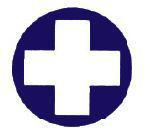SAS Urban Survival Handbook (85 page)
Read SAS Urban Survival Handbook Online
Authors: John Wiseman
Tags: #Health & Fitness, #Reference, #Survival, #Fiction, #Safety, #Self-Help, #Personal & Practical Guides, #General, #Survival Skills

Sea travel
 Since the Herald of Free Enterprise went down yards from Zebrugge harbour in 1987, some people might have thought twice about the risks involved in travelling by sea. That disaster created such a stir, however, partly because it was so unprecedented. Nowadays ferry operators have been obliged to check into their standards of safety. On a modern ferry, ship or cruise liner, the worst problem you’re likely to encounter is seasickness.
Since the Herald of Free Enterprise went down yards from Zebrugge harbour in 1987, some people might have thought twice about the risks involved in travelling by sea. That disaster created such a stir, however, partly because it was so unprecedented. Nowadays ferry operators have been obliged to check into their standards of safety. On a modern ferry, ship or cruise liner, the worst problem you’re likely to encounter is seasickness.
Just about all ships these days are fitted with stabilizers which cut down the severity of the rolling motion. Often, once you become accustomed to the motion, you find your ‘sea legs’ and can enjoy the crossing. Otherwise, travel-sickness pills are very effective. Beware of taking these on a short ferry crossing, when you intend to drive afterwards—they can cause severe drowsiness. AVOID mixing such tablets with alcohol.
As on aeroplanes, the crew is highly trained in emergency procedures, so if anything serious does go wrong, you will be advised what to do. Long cruises always begin with a muster drill, for which you will wear your life jackets. Note the positions of muster stations on shorter crossings, if you’re feeling nervous. Bon voyage!
First-aid kit
 Obviously, if you’re going to Paris or New York for the weekend, items such as antimalarial tablets will be unnecessary. Know your destination! What will you be likely to need? Make your own check list.
Obviously, if you’re going to Paris or New York for the weekend, items such as antimalarial tablets will be unnecessary. Know your destination! What will you be likely to need? Make your own check list.
| Insect repellent | Travel sickness tablets |
| Antihistamine ointment | Painkillers |
| Sunscreen lotion/sunblock | Water purification tablets |
| Calamine lotion | Dressings/plasters |
| Antiseptic cream | Cotton wool |
| Diarrhoea remedy | Scissors |
| Aperient (mild laxative) | Tweezers |
| Antimalarial tablets | Safety pins |
| Indigestion tablets | Thermometer |
REMEMBER
If you are prone to a recurring condition (haemorrhoids, mouth ulcers, gingivitis, cystitis), don’t forget to include your usual medication—it might be unavailable or very expensive. If you are receiving prescribed medication, make sure you take enough to last for the trip.
ANTI-AIDS KIT
If you’re travelling to a Third World country, it has been suggested you could take this kit to protect against contaminated blood or equipment should you need emergency treatment (to be administered by a doctor):
- ■
2 X 5 ml syringes - ■
1 X 10 ml syringe - ■
4 X red needles 23 g X 1¼” - ■
4 X green needles 21 g X 1½” - ■
1 X scalpel handle, plus blades - ■
2 X curved needles with fixed silk sutures 26-30 mm
If you’re staying a long time, consider including:
- ■
2 X Macrodex saline plasma expander 500 ml - ■
2 X Dextrose saline 500 ml - ■
3 X intravenous infusion sets

WARNING
If you have any medical condition that could affect your ability to travel safely, or your comfort abroad, seek medical advice before you leave home. You need to be aware of any special risks, how much medication to take with you and who to contact if you have a problem. It really would be worth learning some likely phrases such as: ‘I am a diabetic. My bag has been stolen. I am in desperate need of insulin.’ Among the groups who should seek advice are anaemics, asthmatics, arthritics, diabetics, epileptics, haemophiliacs and those who have recently suffered a heart attack. Pregnant women should also check before travel.
WHEN YOU ARRIVE
Apart from having all the necessary vaccinations before you leave home, there are certain precautions you can take to minimize the risk of falling ill or having an accident.
Food and drink
Funny tummy, Delhi belly, Montezuma’s revenge, Rangoon runs, Aztec two-step, Tokyo trots—whatever you call it, traveller’s diarrhoea is practically an occupational hazard of leaving home—or it is for those who don’t take care.
This holiday blight has been shown to be more prevalent among the under-30s than in older people. Possibly older people tend to have travelled more and developed immunity to foreign bugs, or they may be more careful and sensible eaters.
Still, a change of climate and diet alone can upset the system enough to make you prone to infection. Nobody seems quite certain whether traveller’s diarrhoea can be entirely avoided. Generally it lasts no more than three days.

WARNING
If diarrhoea persists for a week or more, you MUST seek medical attention – it could well be a symptom of something more serious. Typhoid and the paratyphoids, cholera, amoebic or the bacillary dysenteries, giardiasis and various worm infestations all start with these symptoms.
Many cases of holiday diarrhoea are due to germs finding an ideal habitat in poorly-cooked or unhygienically-kept food or in the local water supply, from which they find another ideal habitat in your body. Don’t give them a chance! Avoid:
- ◑ Unsterilized water
- ◑ Unboiled milk
- ◑ Bottled water with a broken seal on the cap
- ◑ Ice cubes—they usually ARE local water
- ◑ Unpeeled fruit—including tomatoes and cucumber
- ◑ Salad, unless washed in safe water
- ◑ Watercress
- ◑ Tepid cooked food or food from a display
- ◑ Shellfish, unless very hot and fresh
- ◑ Food from street traders
- ◑ Locally-made ice cream—stick to proprietary brands
- ◑ Anything from a fly-infested restaurant
If you do succumb, you could take a diarrhoea remedy, but it may be better to let the infection take its course. Do what you have to do. Drink plenty of non-alcoholic fluids, preferably bottled water (not tea, coffee OR fruit juice—they’ll irritate the stomach further). Eat nothing—or a little bland food—and rest until the storm has passed.
REMEMBER
The contraceptive pill and other medicines are likely to be expelled from your body before they’ve taken effect.
Accidents
Being involved in an accident away from home can be a miserable, or even a fatal, experience. Of course, misfortune can befall you anywhere, but don’t imagine a holiday means a holiday from being sensible.
The first priority is to make sure your insurance is adequate to cover medical costs at your destination. It’s difficult to be overinsured if you’re heading for the USA or Canada—go for the maximum cover. You can buy insurance from your travel agent along with the tickets, or direct from an insurance firm. It’s usually included in a travel package which covers cancellation and lost or stolen property too.
Take the original cover note with you, and make a copy to leave at home. Check whether you need to inform the insurance company straight away if you make a claim, and get a receipt if you need to pay upfront for any treatment.
As always, keeping safe is a matter of common sense—a virtue that sometimes deserts otherwise quite sane people in the excitement of being on holiday. Driving abroad—though you may be on the ‘wrong’ side of the road—is just the same as driving at home. That’s to say, even if the police aren’t so vigilant, you NEVER drink and drive. If everyone else seems to drive like a maniac, YOU must observe all the safe practices of defensive driving you use at home.
Assess the risks
Be careful with mopeds and motorbikes in holiday resorts. They’re often very old and badly maintained. If you’re not used to riding one, it might be better not to learn on a pitted road with loose stones, a sheer drop on either side, hairpin bends and local drivers driving towards you at enormous speeds.
In fact, if you try any activity for the first time—windsurfing, parascending, skiing, waterskiing—make sure you get some lessons, and that your teacher is competent/qualified. If you don’t speak the local language, look for a teacher who speaks enough English for you to be able to understand the instructions.
If you do hire a car, try to patronize a reliable firm. If you’re unsure of the quality of the vehicles, don’t be shy—use the following check list to vet the car:
HIRE CAR CHECK LIST
Before you drive:
- ■
Does the ENGINE start easily first time? - ■
Check TYRE treads and pressures. Is there a jack and tools for changing the wheel? Check the SPARE TYRE too - ■
Is the tank full of FUEL? Is OIL at the correct level? - ■
Is there enough WATER in the cooling system? Washer bottle? - ■
Do SEATBELTS fasten, unfasten and retract? - ■
Do all ELECTRICS, especially lights and wipers, work? - ■
Do all DOORS open and close? Do the KEYS work?
Now check you have all the necessary documentation, and preferably a handbook too. Note any dents, scratches and chips in case you’re charged for them. Drive round the block before accepting the car
- ■
Is the CLUTCH smooth? - ■
Are the GEARS easy to find? Do they crunch? - ■
Are the BRAKES smooth? Are they even? Do they screech? - ■
Do all the INSTRUMENTS work?